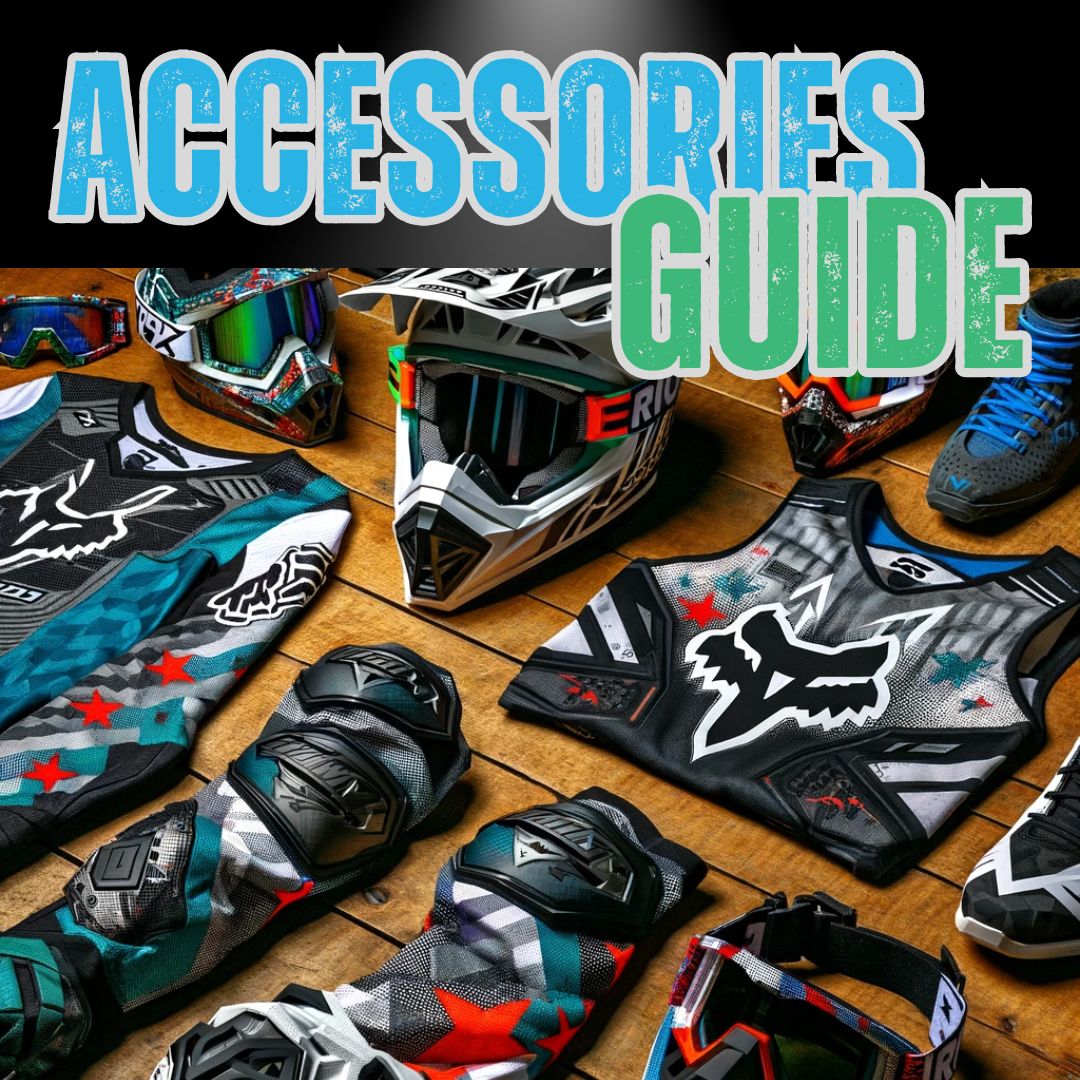
Updated: 17.4.25
Dirt biking is an adrenaline-fueled sport that draws in thrill-seekers of all ages. From young adventurers to seasoned riders, it’s a high-speed hobby that demands respect for safety.
Whether you're hitting muddy trails or tackling rocky hills, the right gear can mean the difference between a fun ride and a serious injury. This guide breaks down the essential safety equipment every dirt bike rider needs to stay protected on every ride.
Critical Head Protection
Helmet
The most vital piece of safety gear, a dirt bike helmet protects your skull from high-impact crashes. Go for a full-face design with optimal ventilation, a visor to shield from roost, and EPS foam for impact absorption.
Why Are Off-Road Helmets Different?

Goggles
Essential for shielding your eyes from dust, bugs, and flying debris. Opt for models with anti-fog lenses and wide-angle vision for better clarity in all weather conditions.
Upper Body Protection
Neck Brace
Although debated, a neck brace can significantly reduce spinal injuries. If comfort allows, it's a smart addition for high-risk rides.
Chest Protector & Body Armour
Protects the chest, back, and ribs from impact and debris. Look for lightweight, breathable options that integrate with other gear like neck braces.
Gear Comparison Table
| Protection Type | Body Armor | Chest Protector | Neck Brace |
|---|---|---|---|
| Covers | Chest, Back, Shoulders, Arms | Chest and Back | Neck Support |
| Material | Foam, Hard Shell | Hard Shell, Foam | Plastic, Foam Padding |
| Adjustability | High | Medium | High |
| Best Use | All-round Protection | Roost and Impact | Preventing Neck Hyperextension |
Lower Body Protection
Knee Braces vs. Knee Pads
Braces offer structural support and injury prevention. Pads provide impact resistance at a lower cost. Choose based on terrain and intensity.
| Feature | Knee Pads | Knee Braces |
|---|---|---|
| Protection | Basic Impact | High-Level Support |
| Material | Foam, Neoprene | TPU, Metal Hinges |
| Recommended For | Casual Riders | Advanced, Aggressive Riding |
| Cost | Lower | Higher |
Boots
Riding boots shield your ankles and shins from impacts and offer grip and stability. MX boots are known for their rigidity and durability.
Jersey & Pants
Opt for abrasion-resistant materials. Jerseys should be breathable and allow full range of motion. Pants must offer knee pad compatibility and reinforced panels for falls.
Other Must-Have Gear
Gloves
Protect your hands from blisters and impact while improving grip and control.
Kidney Belt
Ideal for extended rides. Offers lumbar support and helps reduce fatigue during long trail sessions.
Rain Gear
Waterproof gear can keep you dry and warm without sacrificing flexibility. Packable designs are ideal for trail riders.
Maintaining Your Gear
Cleaning
Use mild soap and water or gear-specific cleaners. Air dry helmets, pads, and body armour to maintain structural integrity.
Inspections
Check regularly for cracks, worn straps, or frayed material. Replace anything that compromises your safety.
Adapt Gear to Terrain & Conditions
Different conditions require different gear setups. In rocky areas, ensure elbow/knee guards are robust. In wet conditions, goggles with tear-offs and waterproof jackets are essential.
Fit Matters
Proper fit prevents slippage and ensures full protection. Try gear on in-store or consult sizing guides before buying.
Conclusion
Equipping yourself with the right dirt biking safety gear isn’t just smart—it’s essential. From full-face helmets to knee braces, every piece plays a part in reducing injury risk and improving confidence on the trail. Invest wisely, inspect regularly, and always ride prepared.





Share:
Avoid These 8 Electric Scooter Riding Mistakes!
Things to Look for When Buying a Kids Ride on Car